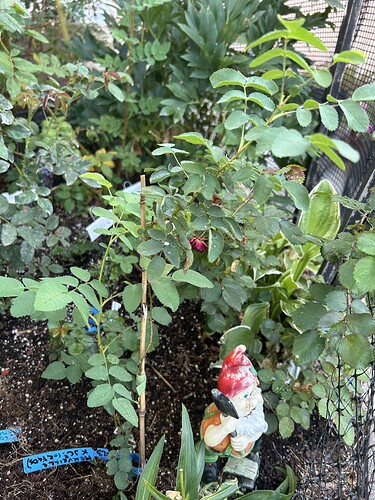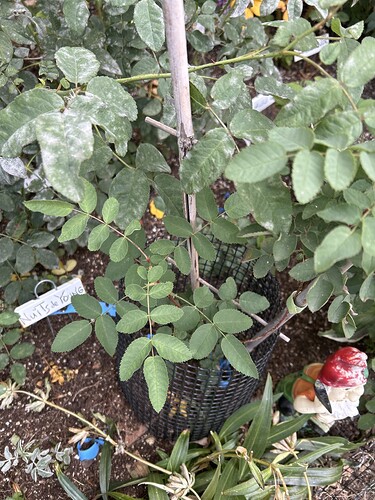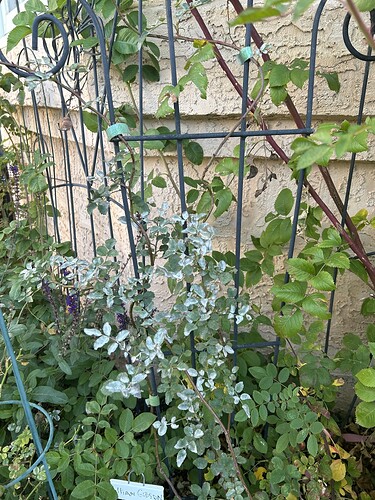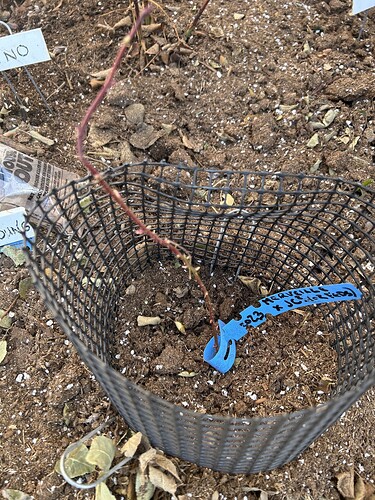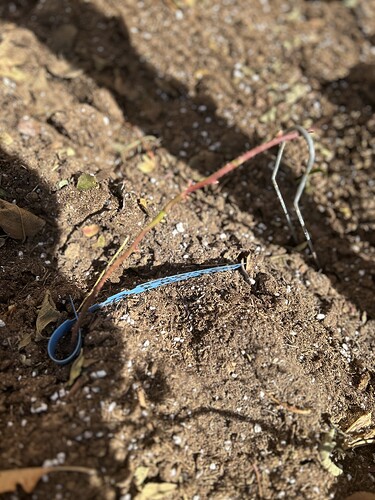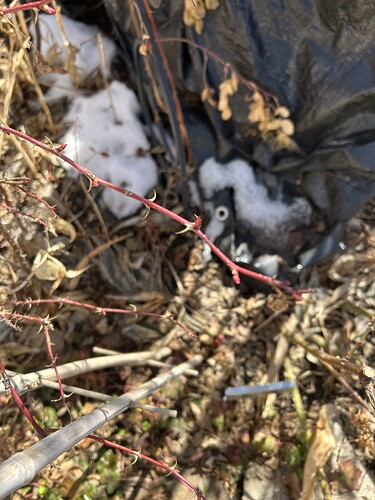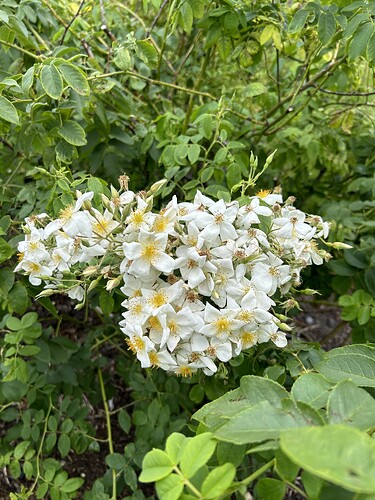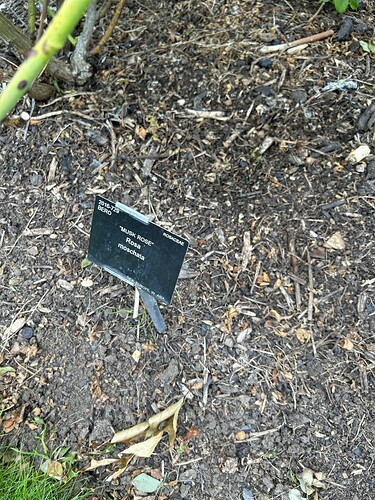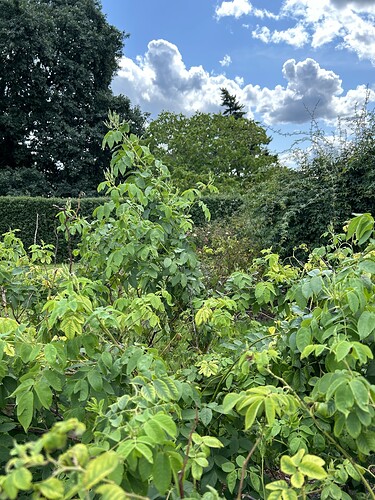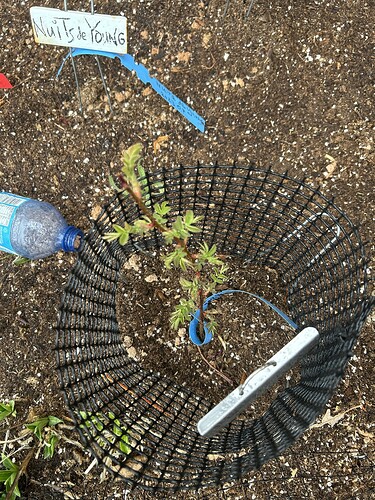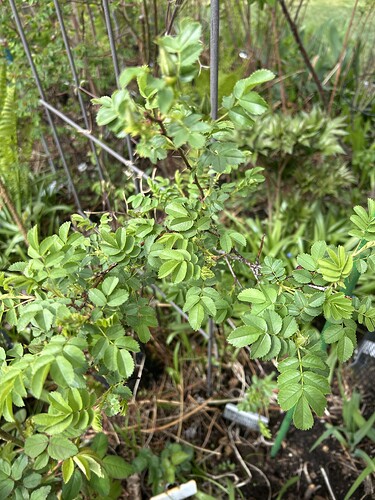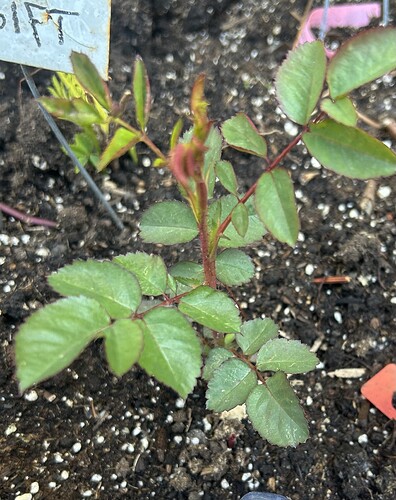Might not excite anyone, but me … in my seedling plot l rediscovered today one of my 2022 cross seedling this morning that l put out this spring … permanently.
Never looked at it this summer as there are lots of seedlings and large roses in the line of sight (10-12) in there. One cane is growing through a Canadian Shield rose.
Why excited ? besides that it actually grew bigger this year,
… because not a lick of powdery mildew, or other assorted ailments. Its clean as a whistle.
Tag says to potential pollen parent Rosa fedstchenkonian or J Cabot.
All other seedlings in same plot have same Merveille seed parent (Gallica) and one of the two same pollen parents. They are plagued with powdery mildew as are some heritage and OGRs in plot.
Tag owner memory mixup occurred last year when digging seedlings out to bring in for 1st winter.
No idea why this one clean.
Maybe R. Kordessi … nah l would claim Simonet’s RDxSuzanne if JC pollen parent. But my Fedstchenkoniana plant is also clean as is the mother Gallica.
Therefore must of outgrown it very early relative to the others.
Never mix tags up or lose track … pita.
Oh … yes it could also be the axeman gnome from snowy’s seven dwarfs … garden plaster threats may work except for voles - direction action required.
Put on small trellis for neatness and vole / rodent deterrent added because of potential
Edit Oct 4 2023
Seedling still clean, nay absolutely spotless relative to Nuit d Younge, Juno or Bullata neighbour, and other seedlings in same plot - indicates young juvenile gold medal athletic champion potential in PM health judging event.
Now needs to tick winter hardy or semi hardy (former preferred for my garden), and bloom boxes … worry about whether of garden merit later if more important boxes ticked first.
I better take one or two cuttings for winter … might be GG to me.
Maybe a one off fluke that only comes around for me once every 25 years based on track record.
Has to be a Gift as it comes with lost male parentage tag. But l know there was only two known ones that l used in Merveille’s crossing. Adds a mystery never to be solved.
